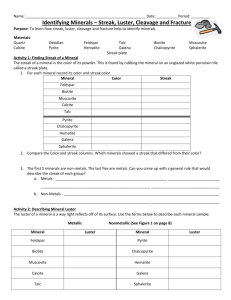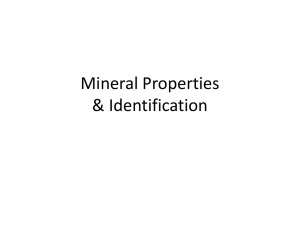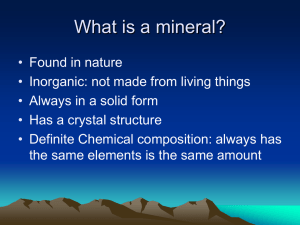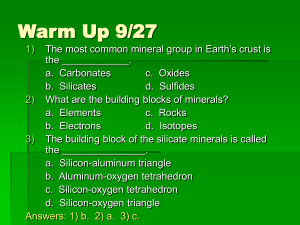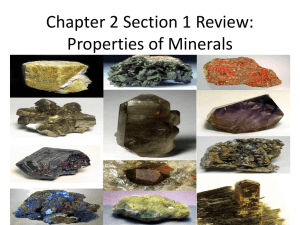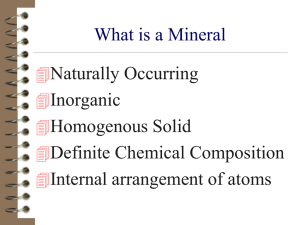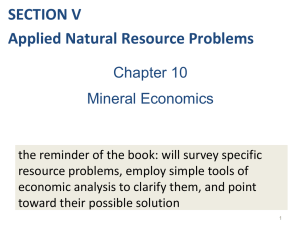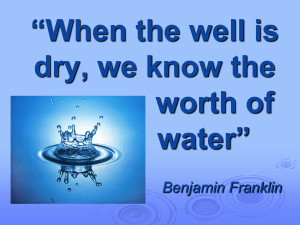Lesson PowerPoint - Lewiston School District
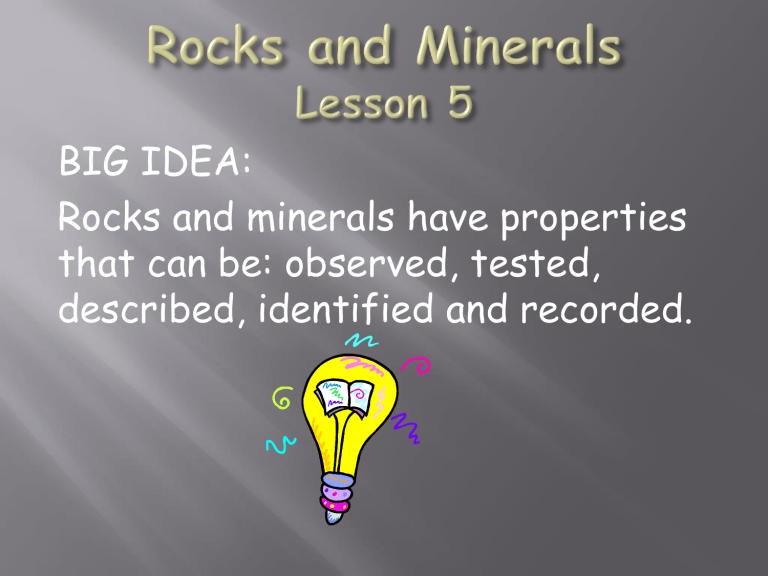
BIG IDEA:
Rocks and minerals have properties that can be: observed, tested, described, identified and recorded.
o o o o
What does the object look like?
Where have you seen it before?
What is it used for?
What do you think it is?
Mr. Maxwell is very eager to see the results of our tests and identify the rocks and minerals in his collection. I told him that we are getting closer, but that we still have a few more tests that need to be completed from the
Geologist before we can accurately identify the minerals.
Today we are going to use more of the information and materials provided by our Geologist to conduct a streak test. This test will help us identify the true color of each mineral. If a geologist can determine a mineral’s true color it can be useful data for identifying and comparing minerals.
What does the principal and geologist want us to do?
What did the geologist give us to help?
What is the problem we need to solve?
How can we…
If you look at the data we collected for the properties of a mineral, do you think color can be used to identify minerals? Discuss with your table group.
It’s very difficult to identify a mineral by the color of a sample because the surface color of the mineral can change over time from exposure to rain, wind, temperature, being covered in soil, and many other environmental factors. We call this “weathering”. This exposure to the environment may disguise the mineral’s true color.
Streak
The color of the fine powder that remains from scratching or rubbing the mineral against an unglazed tile.
Weathering
The break down and discoloration of rocks and minerals from environmental exposure
(water, wind, temperature, organisms, etc.)
I think that we can…because…
In this investigation we are going to determine the true color of each of our 10 mineral specimens by completing a streak test. Scientists determine the true color of a mineral by rubbing the mineral on a piece of unglazed tile called a streak plate. The color of the streak that a mineral leaves on the streak plate is the mineral’s true color and is always the same for every specimen of that mineral.
Determining the true color of the mineral is one more piece of data that can help scientists identify that mineral.
Drag the mineral specimen across the plate. You will need to practice with different pressure and speed so that a consistent, similar color is left after each good streak. The plate should be flat against a surface and not held in your hand in case the tile were to break. Do not strike the mineral against the plate!
What would be the best way to organize our data for our streak test? Discuss in your table groups.
Color Prediction Streak Color Specimen #
3
4
1
2
5
6
7
8
9
10
Share the results of your streak test with all members at your table group.
Be ready to share your results with the class .
What did you learn today?
How can a streak test be used to identify minerals?


